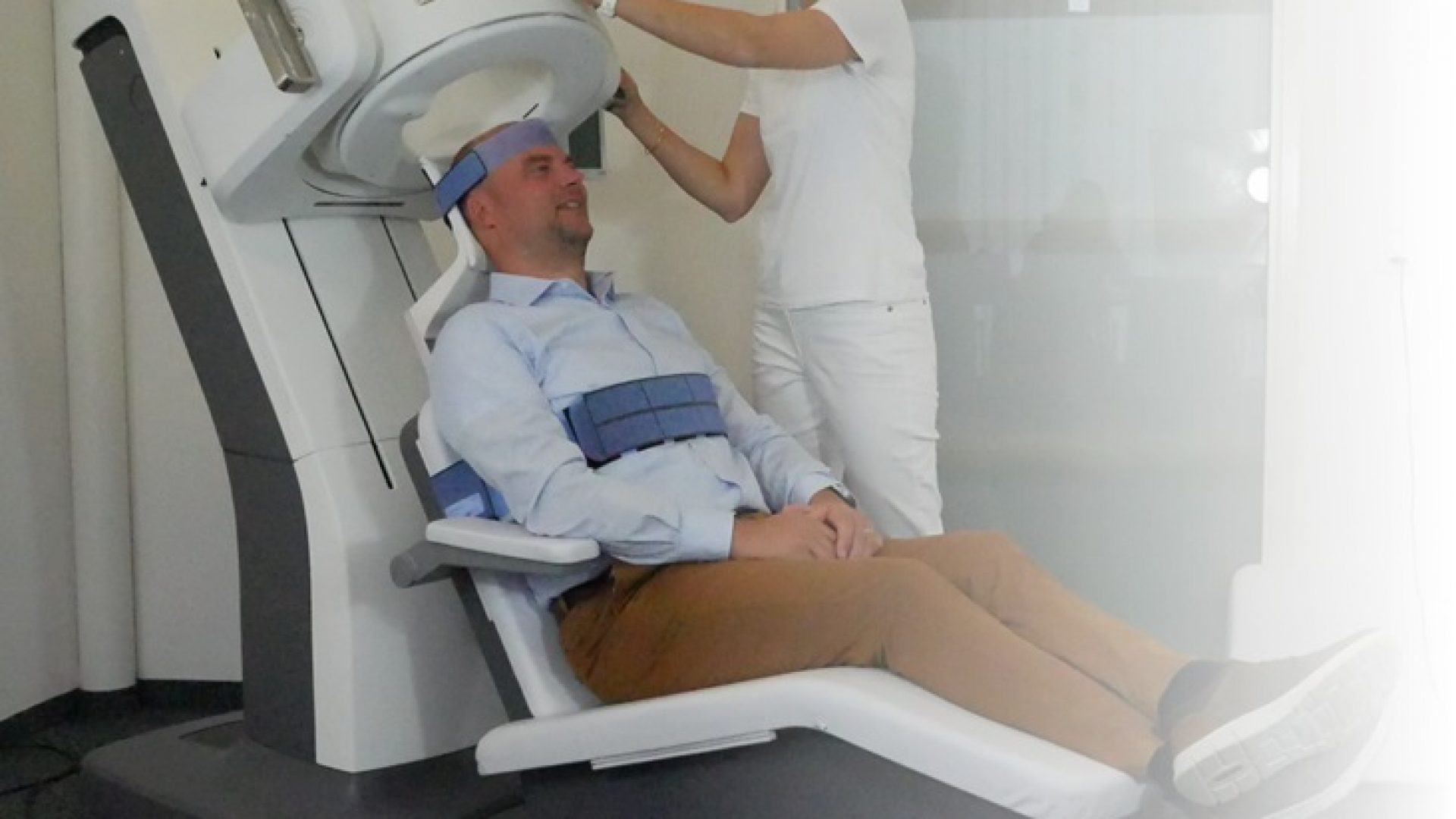NeuroLF now with CE Mark
CE Mark and market clearance in Europe for NeuroLF
October 2, 2024
European market clearance for the NeuroLF® System – a pioneering dedicated brain PET imaging system. This MDR approval (CE Mark) follows recent FDA clearance which makes NeuroLF the first device of its kind to obtain regulatory approval in the US and in Europe.
Positrigo, a Swiss based company developing nuclear medical imaging devices to advance functional brain imaging, has achieved another major milestone with the CE Mark in Europe for its dedicated brain Positron Emission Tomography (PET) system NeuroLF®. This innovative imaging device is ultra-compact and assists in diagnosing and monitoring of brain related disorders like Alzheimer’s disease, Brain Tumors, Epilepsy, Parkinson’s disease and others.
“The CE mark of the NeuroLF system is another important milestone in the development of this dedicated brain PET system and represents a significant advance in the availability of brain PET imaging, allowing nuclear medicine physicians in Europe to offer a dedicated imaging modality to diagnose and monitor patients with brain related disorders”, says Prof. Dr. med. Osama Sabri, Director and Chairman of the Department of Nuclear Medicine at the University of Leipzig Medical Center. Indeed, the NeuroLF system is much smaller and more affordable compared to the currently available clinical hybrid PET systems with a much larger footprint and weight and always combined with either MRI or CT. Dr. Jannis Fischer, co-founder and CEO of Positrigo states: “At Positrigo, we seek to push the limits by developing and commercializing new types of medical imaging technologies. The CE mark of the NeuroLF system is testament to this, now offering healthcare professionals the potential to improve the diagnosis for people living with brain related disorders like Alzheimer’s disease (AD) while setting a new standard in brain PET imaging.”
Increased Demand for Brain PET in Europe
The European Association of Nuclear Medicine (EANM) Neuroimaging Committee believes that amyloid PET is now at a historical turning point, where it has paved the way for early AD diagnosis. These experts expect that amyloid PET will be more widely used in the near future to justify the initiation and to monitor the effect of disease-modifying therapies on biological grounds (1). The Nuclear Medicine community should therefore be prepared to adjust its capacities to the increased demand for amyloid PET radiotracers, PET imaging infrastructure, and training for image reading and reporting in the near future. According to some estimates, the need for amyloid PET may increase by a factor of 20 (2). Thanks to the European market clearance of NeuroLF, Positrigo is now able to offer a solution which can improve the PET imaging infrastructure.
Commercialization in Europe with selected partners
Positrigo plans to sell its novel technology in Europe by leveraging a network of established companies in selected countries. “Due to the fragmented healthcare system in Europe with different country specific purchase mechanisms and healthcare reimbursement systems, it is most efficient to partner with local companies in selected countries,” explains Dr. Stefan Bircher, CCO at Positrigo. “This way we believe to achieve fast commercial traction and hope to be be able to offer best in class after sales support at the same time”.
The NeuroLF system is the first device of its kind which received market clearance in Europe and in the US. These two market approvals are important milestones for commercial opportunities in other parts of the world.
About Positrigo:
Positrigo is a pioneer in nuclear medical imaging technologies. Headquartered in Zurich, Switzerland, the medical device company was founded in 2018 as a spin-off of ETH Zurich. Positrigo’s technology, development, clinical testing and commercialization has been supported by various private investors, the Swiss government and the European Innovation Council. NeuroLF – the company’s first device – is an ultra-compact brain Positron Emission Tomography (PET) scanner which has applications in the assessment of causes of dementias, such as Alzheimer’s disease and other brain related disorders.
References:
